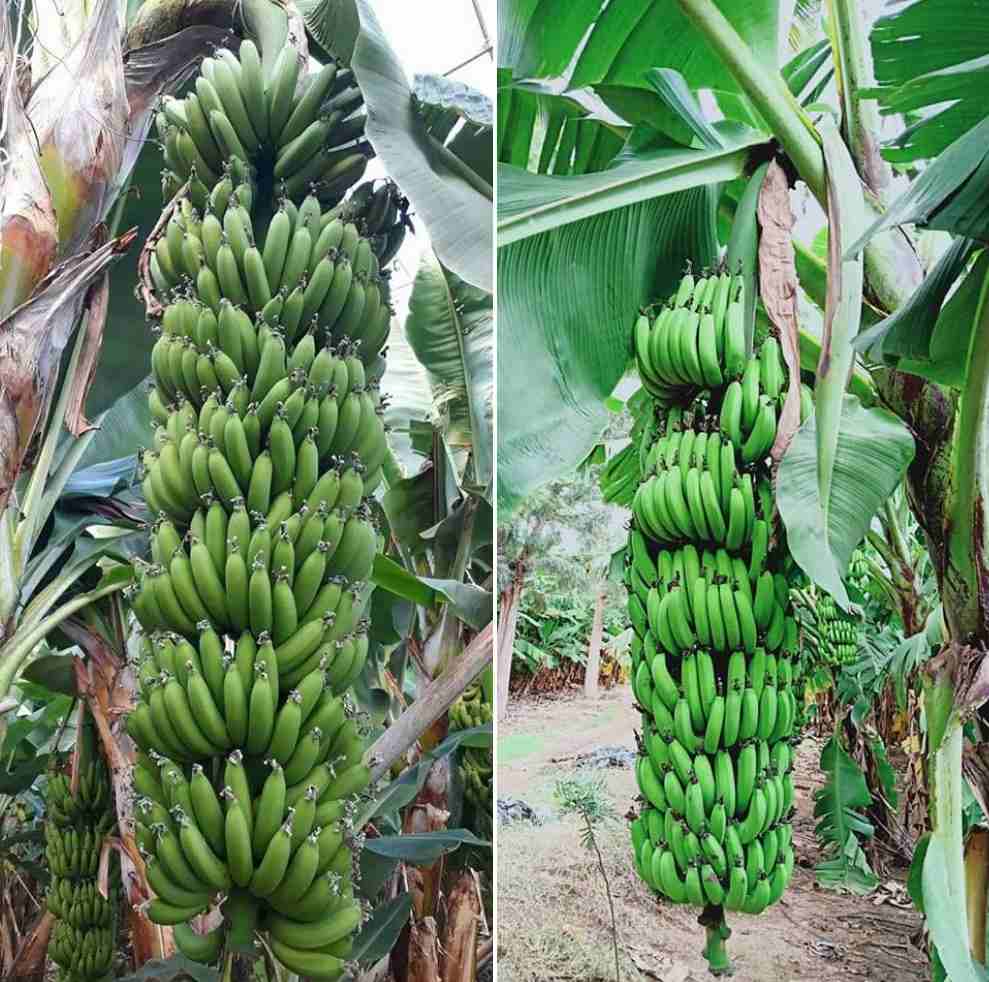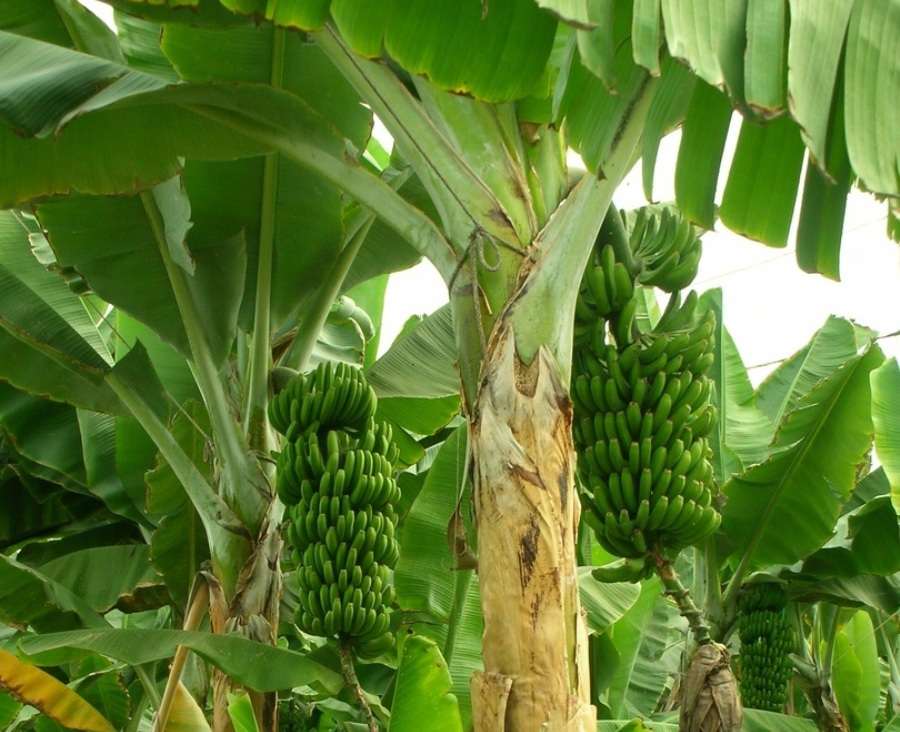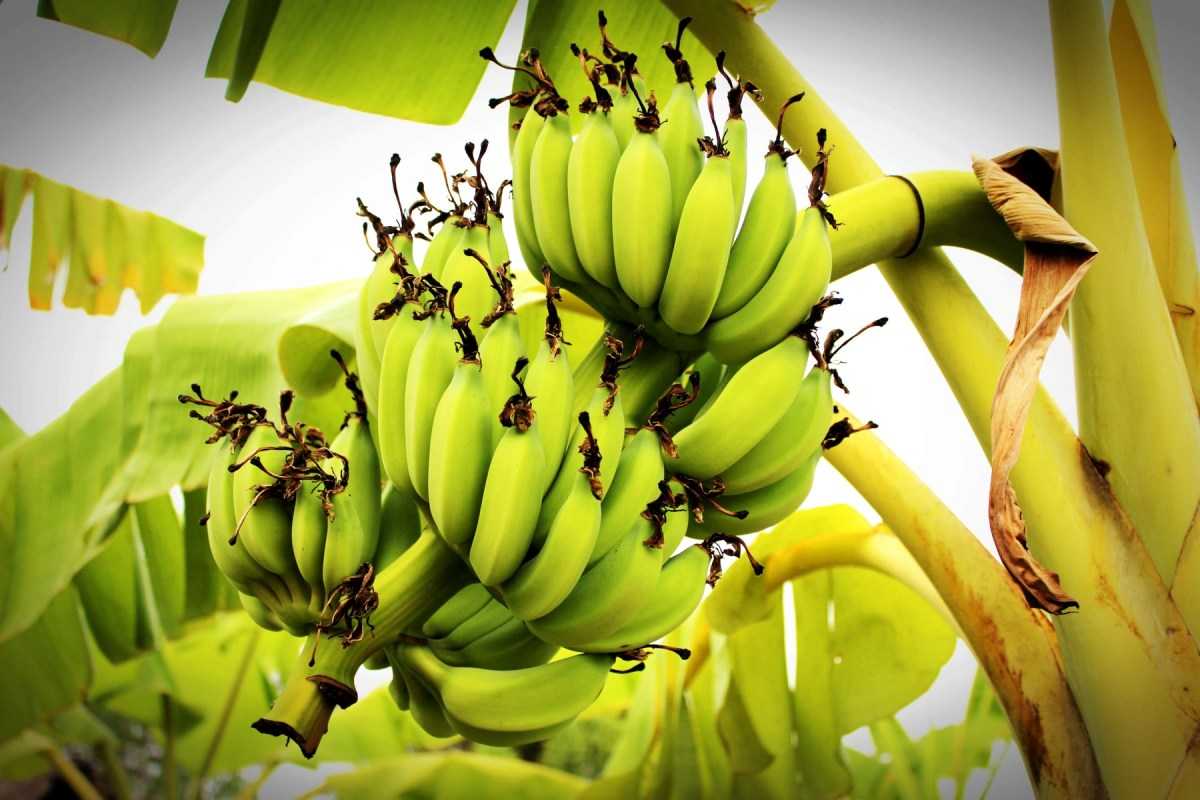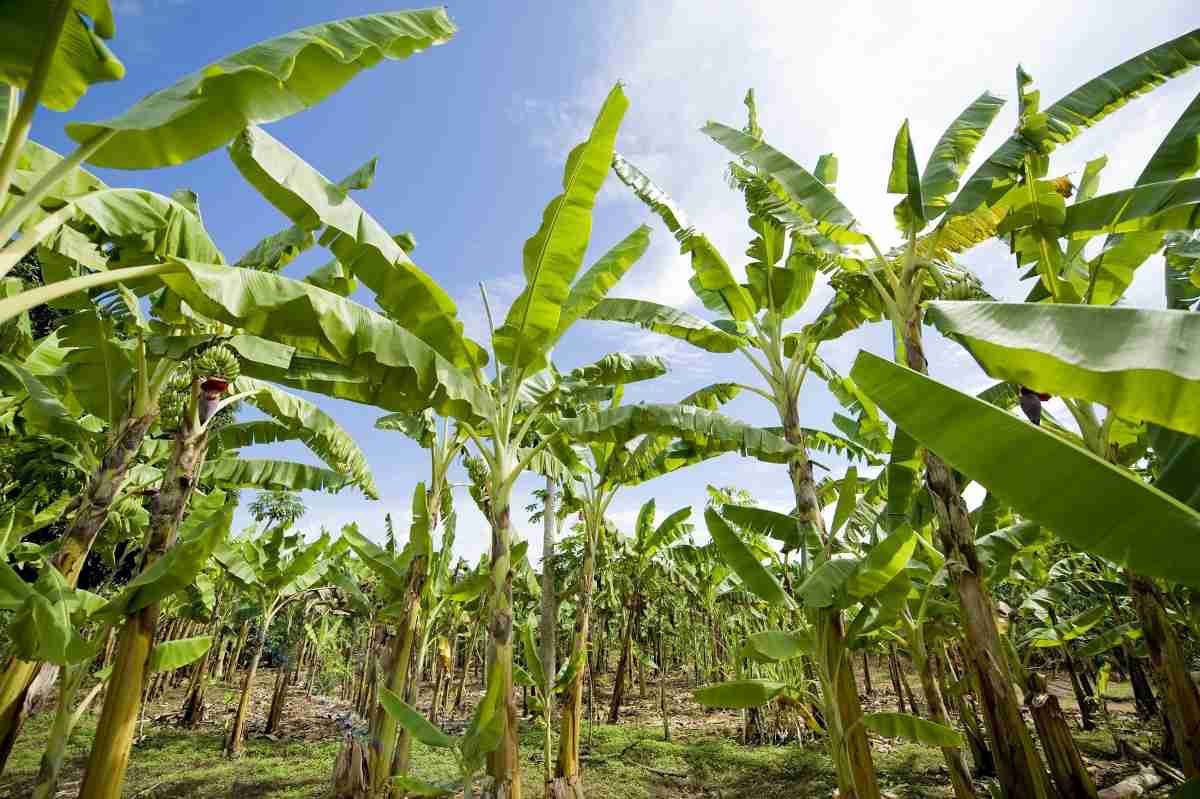Introduction to organic Banana farming
Organic farming is a crop production technique respecting the rules of nature. Organic farming maximizes the use of on-farm resources and minimizes the use of off-farm resources. It is a farming that seeks to avoid the use of chemical fertilizers and pesticides.
A step by step guide to organic Banana farming
In organic farming, the entire system that means plant, animal, soil, water, and micro-organisms are to be protected. By organically growing Bananas, uses natural materials to feed the plant and produce edible Bananas without chemicals and pesticides. The nutrient management through organics plays the main role in maintaining soil health due to the build-up of soil organic matter, beneficial microbes, and enzymes, besides improving soil physical and chemical properties. To achieve sustainable soil fertility and crop productivity, the role of organic manures and other nutrient management practices like the use of fermented organic nutrients that means, Panchagavya, Jeevamrut, Beejamrut, Sasyamrut, and Vermiwash, etc., are becoming popular among farmers. These fermented liquid organic fertilizers contain in addition to nutrients, numerable microorganisms, and growth-promoting substances which help in improving growth, metabolic activity, and resistance to pest and diseases.
Soil requirement for organic Banana farming

The physical and chemical properties, organic matter and biological activity of the soil are fundamental to sustaining agricultural production and determine, in their complexity, soil fertility, and soil productivity. Appropriate soil management aims to keep and improve soil productivity by improving the availability and plant uptake of water and nutrients through enhancing soil biological activity, replenishing soil organic matter, and minimizing losses of soil, nutrients, and agrochemicals through erosion, runoff and leaching into surface or groundwater. Soil management is undertaken at field or farm level, and it affects the surrounding area or catchment due to off-site impacts on runoff, sediments, nutrients movement, and mobility of livestock and associated species such as predators, pests and biocontrol agents.
Good practices related to soil include maintaining or improving soil organic matter through the use of soil carbon-build up by suitable crop rotations, manure application, pasture management, and other land-use practices, rational mechanical and conservation tillage practices.
Organic fertilization practices for Banana production
The below organic fertilization practices can be implemented in Banana plantations to improve the necessary nutrient content of the soil;
Intercropping – Planting seasonal crops between Banana rows to increase the fertility of the soil. The most common intercrops for Banana plantations are leguminous crops, but coffee, vanilla, cocoa, and tropical fruits are used. Intercropping is exclusively implemented in the non-export Banana sector. Trees are an intercrop that provides shade to the plantation and protect Banana trees from the wind.
Weed management – Mulching, cover cropping, or mechanical weed management.
Water conservation – It is important to preserve moisture in the plantation by building terraces to keep water in the field, mulching crops, and planting cover crops, as long as they are not competing with Banana plants.
Soil conservation – Applying compost in the planting holes of Banana trees and adding organic manures afterward improves the growth and productivity of plants.
Planting material for Banana farming
The Banana is propagated mainly by suckers and rhizomes. Though, tissue-cultured plantlets are also being used on a large scale nowadays. These tissue cultured plantlets enable early harvesting in 11 to 12 months after planting.
Suckers can be obtained from neighboring farms. Care must be taken to select disease-free suckers. Before planting, the suckers must be treated to prevent nematode attacked. The suckers should be soaked for about 10 minutes in a solution prepared by mixing 100 liters of water with 3 liters panchakavya with Trichoderma viride and pseudomonas.
The large suckers must be placed in the windward side followed by the smaller sucker. This helps to reduce wind and gives uniform crop yield. After 1 month of planting, sun hemp can be sowed. When it comes to flowering, it would be plowed. Before harvesting 3 weeding should be done. At 1 ½ month apply vermicompost by 1 ½ kg per tree and on the 75th day apply 1 basket of farmyard manure for each tree. Within 95 to 100th-day place Azospirillum, vermicompost, and phosphobacteria by 200g per tree.
Compost for organic Banana farming
Compost is the main product used in the organic production of Bananas. It is a fertilizer based on organic waste that results from a process of decomposition due to soil organisms such as bacteria, worms, mites, fungi, and insects, etc feeding on organic waste in the air. The nutritional contribution depends on the organic material used for Banana production.
Among the main benefits of the application of compost are improvements in the condition of the soil, increased microbiological activity, regulation of temporary excess of minerals and toxic substances, increased soil fertility, prevention of nutrient loss by leaching, reduced intake of nitrates and less pollution of aquifers.
It is important to consider that Banana roots need a good soil structure, including porosity, depth, adequate ventilation, and good natural nutrients. Any physical or chemical constraint that limits its growth reduces the productive potential of the Banana plant. With compost applications, it is possible to not just substitute inorganic fertilizers, but also to develop the soil structure to provide the best conditions for Banana production in the long term. Before any application, it is essential to analyze the soil to avoid over or under-fertilization.
The process of organic Banana farming
In case if you miss this: Aquaponics Farming Business Plan for Profits.

Step 1) First, pick a location that stays warm throughout the growing season. For good growth, the temperature of the area needs to stay above 15°C. Growth stops below 10°C and the heat damages the plants when temperatures rise above 36°C. The best planting location for Bananas is in the full sun, but the light shade is tolerated in hot locations.
Step 2) Remove the weeds from the selected site. Spread about 6 inches of well-rotted compost over the area. Organic compost is made from hay, straw, grass clippings, plant leaves, rabbit manure, chicken manure, and seaweed. Dig the soil up to about 12 inches deep with a shovel and mix the compost into the soil.
Step 3) Break the soil up with the edge of a garden hole and dig a hole as deep and as wide as the root ball of the Banana plant. Place the root ball in the hole and pack the soil around the plant roots. Space other Banana plants about 8 to 12 feet apart, depending on the mature size of the variety.
Step 4) Spread 2 to 6 inches of organic mulch around the base of the Banana plant. Keep the mulch 2 to 6 inches from the trunk and then expand the mulch layer 2 to 6 feet over the root zone. Shredded bark and wood chips are good mulch for these plants. The mulch retains soil moisture, reduces the growth of weeds, and provides the Banana plant with slow-release organic nutrients.
Step 5) The time of planting of Banana depends on climatic conditions and availability of water. In areas of heavy and continuous rains, planting of Banana must be done after rains i.e. September – October and in those areas where rains are not so, heavy planting can be done in June-July. In Irrigated areas, the Banana planting is done in February – March and in hilly areas in April. The planting material is treated with a solution of about 250 g of ghee, 0.500 g of honey, and 15 kg of cow dung.
Step 6) The spacing adopted by organic Banana cultivators is about 1.5 m x 1.5 m and 1.5 m x 1.8 m. Though for tissue cultured Banana, the Grandnaine planting style is different from traditionally Banana culture.
Step 7) Water the plant once a week during the first growing season after planting and twice a week during hot, dry conditions. Cut the amount of water provided once the Banana plant has established its roots.
Step 8) Start feeding the plant each year in the spring before new growth appears. Make your organic tea and feed a 10-percent solution to the roots every two to three weeks. Stop feeding the plant in the fall.
Step 9) Prune out the flower clusters to one or two stalks. After the flowers have bloomed, let two others produce for next year’s crop. The hand of Bananas is ready to pick when the top of the cluster starts to turn a yellow color. Remove the stalk of Bananas and let them ripen at room temperature level.
Organic manure for Banana farming
- FYM or compost or green leaves by 10 kg/plant at the time of planting.
- About 500 g of lime in the pit and allow to weather.
- Vermicompost by 2 kg/pit at the time of planting.
- Groundnut cake/ neem cake by 1 kg /pit at the time of planting.
- N, P, and K biofertilizer- PGPR mix by 50-100 gm /pit should be applied at the time of planting. The biofertilizer must be mixed with 5 kg FYM. It should be ensured that there is enough moisture in the soil at the time of application.
- Panchagavya 3% as foliar spray 3 times at 3rd, 6th, and 9th months after planting
- After planting Banana, sow sunnhemp /daincha/ cowpea adopting a seed rate of about 50 kg/ ha (20gm per plant). Incorporate the crop into the soil forty days after sowing. Repeat sowing of green manure crop and incorporate it into soil forty days after sowing. Compost made from Banana leaves and bunch stalk is rich in potassium content and vermicomposting is a novel technology for organic Banana.
Organic pest and disease control in Banana plants
The major pests and diseases in the Banana crop are rhizome weevil, nematodes, bunchy top, leaf spot, etc. In the case of organic Banana farming, dasparni arka, and neem cake are used to control pests and diseases. The dasparni arka, which means a mixture of leaves of ten kinds of plants is prepared by adding 25 kg neem leaves and 2 kg leaves each of custard apple, nirgudi, kaner, cotton, papaya, castor, karanj, gudwel, drumstick in 200 liters of water, 5 to 10 liters of gomutra and 2 kg of green chilies, the solution is kept for 15-20 days for fermentation. The stock solution is prepared by filtration through a muslin cloth and the spraying is done by diluting the arka further by adding 100 liters of water to 2.5 liters of the arka
Pests control organically in Banana crop;
Banana pseudostem weevil – Pseudostem weevil is a serious pest of the Banana plant. It attacks the crop from 6th month onwards and adult female weevil inserts eggs into the air cavities of the pseudostem.
Management
- Field sanitation – take out all dried leaves over the pseudostem.
- Remove severely infected plants with rhizome in full and then destroy by burning the life stages of the insect.
- Destroy pseudostem of harvested Banana plants.
Banana Rhizome Weevil – Adult females puncture the rhizome and insert eggs through the holes. When the growing point is damaged, the Banana plant is killed. Symptoms are the death of unopened pipe leaf, delay in the emergence of new leaves, and then reduction in leaf number and bunch size.
Management
- Select healthy, pest-free planting material.
- Deep plow the land to remove old rhizomes and expose the inner soil layer to the sun.
- Collect and destroy the adult weevils daily.
Aphid – Aphid acts as a vector for the transmission of viral diseases of the Banana plant. The fungal biocontrol agent Verticillium lecanii is pathogenic to the aphids. Spray the spores of V. lecanii by 1 x 107 spores/ml, whenever aphid population is noticed.
Nematodes – Major species attacking Banana are burrowing nematode, root-knot nematode, root-lesion nematode, and cyst nematode. Reduction in the number of plant leaves, bunch weight, and several fingers are the symptoms.
Management
- Pare the rhizomes and dip in hot water at 45 to 50°C for 20 minutes will control nematodes.
- Apply neem cake by 1kg/plant at the time of planting.
- Intercrop Banana with marigold to reduce the nematode population.
Panama Wilt
- Remove and destroy affected clumps
- Apply lime by 500g per pit and allow to weather
- Apply neem cake by 1kg per pit at the time of planting and give irrigation.
- Some varieties such as Palayankodan, Robusta and Nendran are less susceptible to the disease
- Dip the planting material in 2% Pseudomonas before planting
Virus diseases Bunchy top disease
A virus disease of Banana transmitted by aphids
- Use disease-free suckers for planting.
- Eradicate disease affected plants.
- The fungal biocontrol agent Verticillium lecanii is pathogenic to the aphids. Spray the spores of V. lecanii by 1×107 spores per ml whenever aphid population is noticed.
- Some varieties such as Karpooravally, Kanchikela, Njalipoovan, and Koompillakannan are tolerant.
Banana Bract Mosaic Disease
Virus disease transmitted by aphids
- Use disease-free healthy suckers for planting.
- Eradicate disease affected Banana plants as and when noticed.
- Spray neem-based insecticide to control the vector.
Infectious Chlorosis
- Use disease-free suckers for planting
- Eradicate infected plants.
- Use a neem-based insecticide to control the insect vector.
Banana plant harvesting
You should not miss this: One Acre Farming Model, Income, Profit, Ideas.

The Banana crop is ready for harvesting 11-12months after planting. Carry out harvesting when Banana is slightly or fully mature according to market requirement. For the local market, harvest fruits at maturity stage and for long-distance transport, harvest fruit at 75 to 80 % maturity. While for export purposes, carry out harvesting, the day before or the same day of shipment. Harvest Banana fruit early in the day in the summer. In the winter season, avoid harvesting too early in the morning.
Commonly asked

What’s the difference between a regular Banana and an organic Banana?
Organic farmers use natural fertilizers like manure and seaweed and rely on insect predators rather than pesticides to keep pests at bay you won’t be ingesting anything harmful. Conventionally farmed Bananas are sprayed with synthetic fertilizers, herbicides, and other harmful chemicals.
How long do organic Bananas last?
Fully ripe Bananas will last for 5 to 7 days in the fridge. Refrigeration will turn Banana skins black color, but will not harm the fruit.
Why do organic Bananas last longer?
Organic Bananas rot. They rot just as easily and then quickly as non-organic Bananas. Organic Bananas tend to be picked earlier as they don’t sell as well and are expected to sit on the shelf longer.
What are the benefits of organic Bananas?
Organic Bananas have no fat or cholesterol and are easy to digest. They are a great source of instant energy, as they have plenty of carbohydrates and contain natural sugars (sucrose, fructose, and glucose) which are released quickly into the bloodstream.
How can you tell if a Banana is organic?
To identify if a Banana fruit is artificially ripened, look for the below signs. Naturally ripened Bananas have black or brown color stalk. The skin of it appears dark yellow with black and brown color spots spread unevenly all over. Artificially ripened Bananas, on the other hand, appear immaculate with lemon yellow color skin.
What is the cost of organic Banana?
Approximately the cost of Organic Banana ₹70.00 per 1kg.
In case if you are interested in this: Profits in Banana Chips Making Business.
well structured content